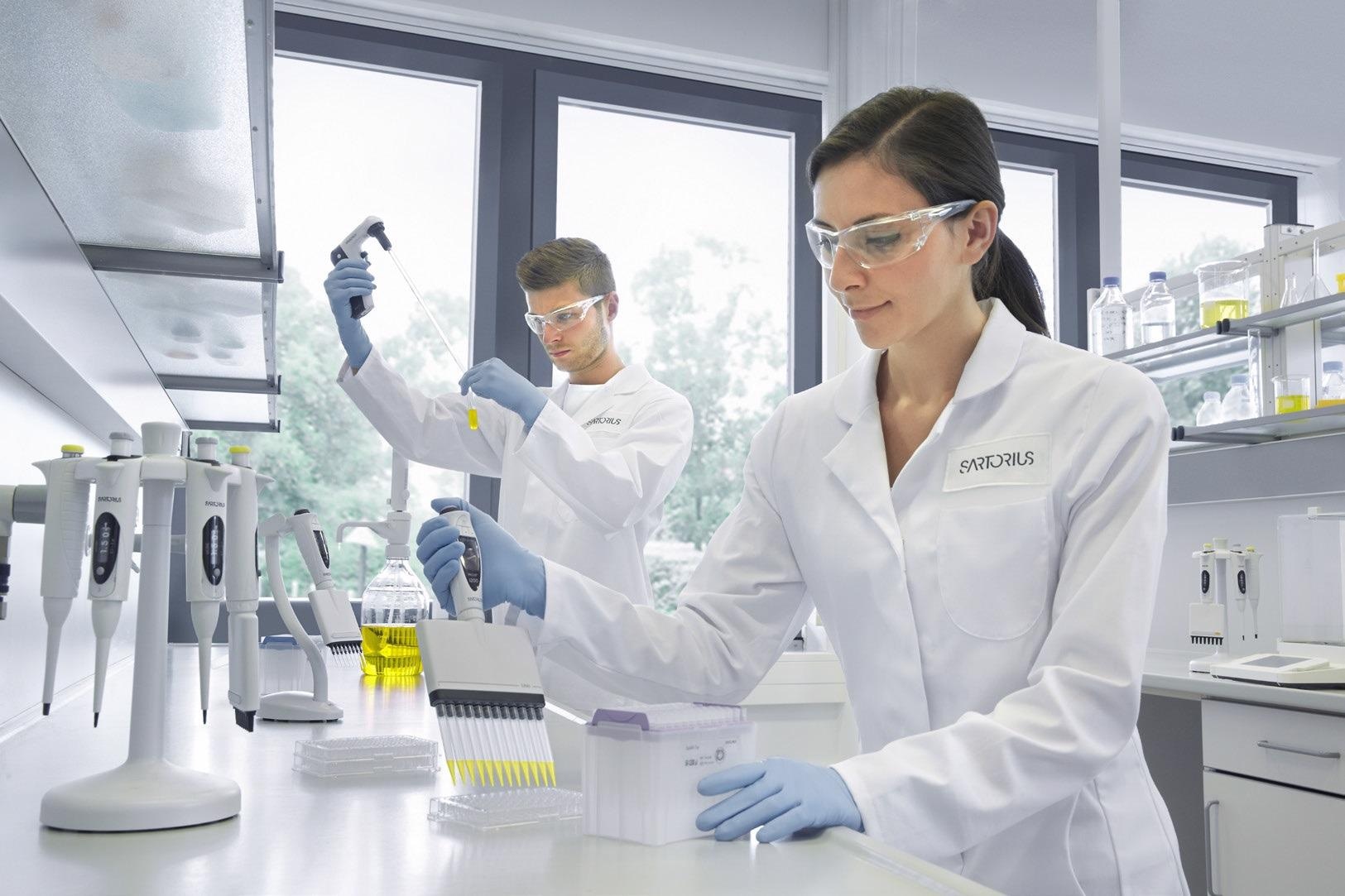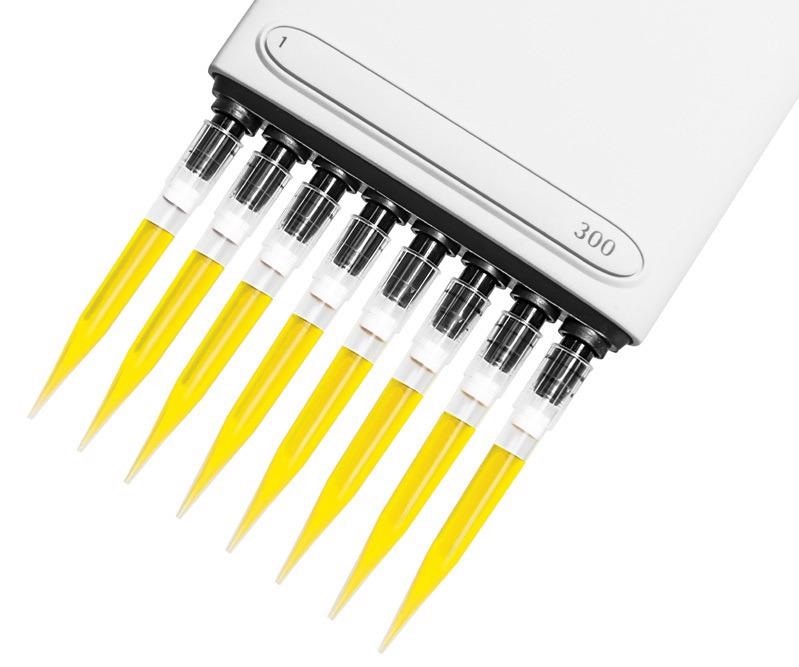Sponsored Content by SartoriusReviewed by Alex SmithJun 30 2022
Preventing contamination in pipetting is absolutely vital when it comes to achieving reliable results. It necessitates the identification of the potential contamination mechanisms so that they can all be addressed.
Aerosols are the primary contamination source in pipetting: aerosols, suspensions of solid or liquid particles in a gas form during numerous laboratory activities such as pipetting with air displacement pipettes.
Contaminations can transfer into the pipette body when unfiltered pipette tips are used and, as a result, taint subsequent samples. A careful and slow pipetting rhythm helps reduce the risk of aerosol formation.
This article addresses the three contamination types that stem from pipetting: pipette-to-sample contamination, sample-to-pipette contamination, and sample-to-sample contamination.
Pipette-to-sample contamination
This sort of contamination results from a contaminated pipette or pipette tip coming into contact with the sample. Pipette tips come in a variety of purity grades from most manufacturers. Purity grades can be separated into three distinct categories:
- Certified free of contaminants, including DNase, RNase and endotoxins
- No certification of purity
- Sterilized to eliminate microbial life
Removing contaminants such as DNase, RNase and endotoxins can be a difficult task with any sterilization method, so it is crucial to avoid any contamination during manufacturing.
The absence of these contaminants is tested separately, typically by a third-party laboratory. Sterilization after manufacturing is an extra step to ensure that the tips do not contain any microbial life (bacteria, viruses, etc.) when distributed to customers.
Pipette tips also have the potential to be a source of leachables – trace amounts of chemicals resulting from materials or process equipment that can contaminate the samples. Examples of potential leachables include antioxidants, biocides, heavy metals, pigments, release agents, surfactants and UV stabilizers.
High quality tips manufactured using 100% virgin polypropylene in a high-quality production facility do not contain leachables. It is advised that this is confirmed and checked with the tip manufacturer.
In day-to-day laboratory work, pipette-to-sample contamination can be prevented by following a series of simple guidelines:
- Change the pipette tip after each sample
- Choose a tip with the relevant purity class for the intended application
- Routinely autoclave or disinfect the pipette or the components that may come into contact with the sample
- Use (sterilized) filter tips. Alternatively, tip-cone filters may be used with some manufacturers’ pipettes. The filters prevent aerosols from potentially contaminating subsequent samples by preventing them from reaching the pipette body.

Image Credit: Sartorius
Sample-to-pipette contamination
This type of contamination occurs when the pipette becomes contaminated by liquid or aerosol particles entering the pipette body. To reduce the risk of sample-to-pipette contamination, the following precautions are advised:
- Slowly release the pipette’s push-button to avert aerosol formation and uncontrolled liquid splashing within the pipette tip.
- The pipette should be held in a vertical position during pipetting and subsequently stored in an upright position. This stops any liquid from running into the pipette body.
- Use filter tips to mitigate any aerosol transfer from the sample into the pipette body. Alternatively, filters can be applied to the pipette tip cones.
Sample-to-sample contamination
Sample-to-sample contamination (or carry-over contamination) may be a result of aerosols or liquid residue being carried over from one sample to the next sample. This sometimes occurs when the same pipette tips are used several times. To prevent carry-over contamination:
- Always change the pipette tip after each sample
- If pipette contamination is suspected, autoclave or disinfect the pipette in line with the manufacturer’s instructions
- Use filter tips to stop any aerosol transfer from the sample into the pipette body and again to the next sample. Alternatively, apply filters to the pipette tip cones.

Image Credit: Sartorius
Definitions
Antisepsis: Applying an antimicrobial chemical to living tissue to destroy microorganisms.
Autoclaving: Autoclaving (moist heat) is a frequently used sterilization method in most laboratories. Hot, pressurized and saturated steam is used to destroy microorganisms and decontaminate laboratory equipment e.g., plastic and glassware. Exposure time and temperature are crucial to the process, as the steam needs to penetrate through the entire load to be efficient.
Decontamination: Any activity that reduces the microbial load to mitigate contamination. Includes methods for sterilization, disinfection and antisepsis.
Disinfection: To eliminate all pathogenic microorganisms (excluding bacterial endospores) and reduce the microbial contamination to an appropriate level. A practical method for surface decontamination is an application of a good disinfectant (e.g., alcohols, phenolic compounds, halogens). The concentration and exposure time should be chosen in relation to the suspected contamination type.
DNase: Powerful enzymes (nucleases) that cause DNA to degrade by hydrolyzing it into short fragments. Even trace amounts of DNases can result in low or no yields in DNA techniques such as PCR, or degradation throughout DNA purification. Contamination sources: human contact, saliva, bacteria.
Endotoxins: Lipopolysaccharides, large molecules that make up part of the outer membrane of Gram-negative bacteria such as E. coli, Salmonella, Shigella, Pseudomonas and Haemophilus. These may cause fever in humans and impede growth in cell cultures.
Released into the environment when bacteria die and the cell wall is destroyed. Contamination sources: endotoxins can be found in all environments where bacteria are able to grow, i.e., water, air, skin, soil, raw materials and any non-sterile environment.
RNase: Powerful enzymes (nucleases) that catalyze RNA degradation into short fragments. Extremely stable enzymes that can be hard to eliminate. Contamination sources: oils from skin, as well as hair, tears and bacteria.
Sterilization: The process of destroying all microbial life, including bacterial endospores using various methods such as steam, heating, chemicals or radiation-based techniques.
About Sartorius

Sartorius is a leading international pharmaceutical and laboratory equipment supplier. With our innovative products and services, we are helping our customers across the entire globe to implement their complex and quality-critical biomanufacturing and laboratory processes reliably and economically.
The Group companies are united under the roof of Sartorius AG, which is listed on the Frankfurt Stock Exchange and holds the majority stake in Sartorius Stedim Biotech S.A. Quoted on the Paris Stock Exchange, this subgroup is comprised mainly of the Bioprocess Solutions Division.
Innovative technologies enable medical progress
A growing number of medications are biopharmaceuticals. These are produced using living cells in complex, lengthy and expensive procedures. The Bioprocess Solutions Division provides the essential products and technologies to accomplish this.
In fact, Sartorius has been pioneering and setting the standards for single-use products that are currently used throughout all biopharmaceutical manufacturing processes.
Making lab life easier
Lab work is complex and demanding: Despite repetitive analytical routines, lab staff must perform each step in a highly concentrated and careful way for accurate results.
The Lab Products and Services Division helps lab personnel excel because its products, such as laboratory balances, pipettes and lab consumables, minimize human error, simplify workflows and reduce physical workloads.
Sponsored Content Policy: News-Medical.net publishes articles and related content that may be derived from sources where we have existing commercial relationships, provided such content adds value to the core editorial ethos of News-Medical.Net which is to educate and inform site visitors interested in medical research, science, medical devices and treatments.